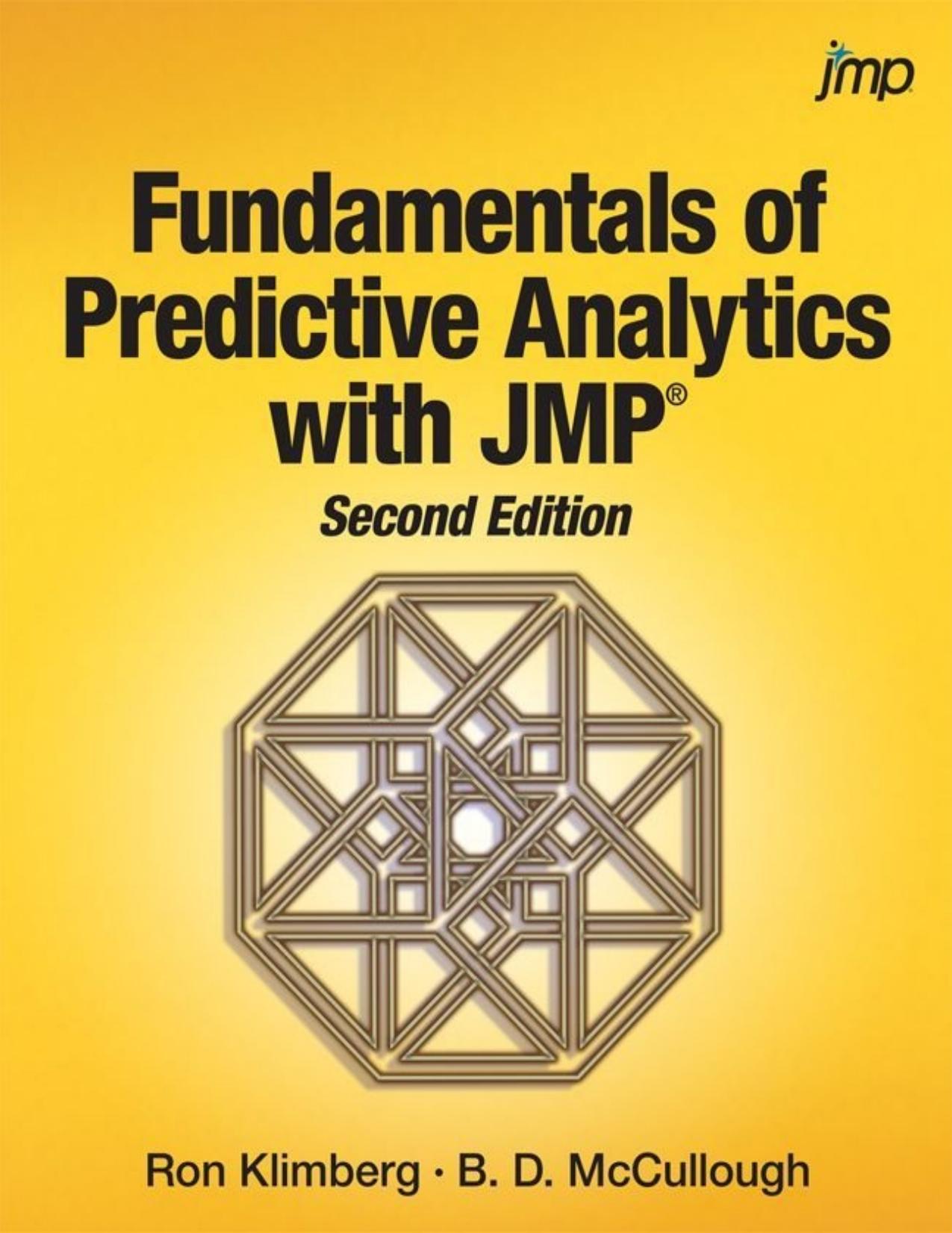Fundamentals of Predictive Analytics with JMP, Second Edition by Klimberg PhD Ron & B. D. McCullough

Author:Klimberg, PhD, Ron & B. D. McCullough
Language: eng
Format: azw3, mobi, pdf
Publisher: SAS Institute
Published: 2016-12-20T08:00:00+00:00
Often there is a natural break where the distance jumps up suddenly. These breaks suggest natural cutting points to determine the number of clusters. The “best” number of clusters is typically chosen at or near this “elbow” of the curve. The elbow suggests which clusters should be profiled and reviewed with the subject-matter expert. Based on Figure 9.11, the number of clusters would probably be 3, but 2 or 4 would also be possibilities. Choosing the “best” number of clusters is as much an art form as it is a science. Sometimes a particular number of clusters produces a particularly interesting or useful result. In such a case, SSE can probably be ignored.
The difference between two and three or three and four clusters (indeed between any pair of partitions of the data set) is not always statistically obvious. The fact is that it can be difficult to decide on the number of clusters. Yet this is a very important decision, because the proper number of clusters can be of great business importance. In Figure 9.12 it is difficult to say whether the data set has two, three, or four clusters. A pragmatic approach is necessary in this situation: choose the number of clusters that produces useful clusters.
Download
Fundamentals of Predictive Analytics with JMP, Second Edition by Klimberg PhD Ron & B. D. McCullough.mobi
Fundamentals of Predictive Analytics with JMP, Second Edition by Klimberg PhD Ron & B. D. McCullough.pdf
This site does not store any files on its server. We only index and link to content provided by other sites. Please contact the content providers to delete copyright contents if any and email us, we'll remove relevant links or contents immediately.
| Biomathematics | Differential Equations |
| Game Theory | Graph Theory |
| Linear Programming | Probability & Statistics |
| Statistics | Stochastic Modeling |
| Vector Analysis |
Weapons of Math Destruction by Cathy O'Neil(5036)
Factfulness: Ten Reasons We're Wrong About the World – and Why Things Are Better Than You Think by Hans Rosling(4021)
Factfulness_Ten Reasons We're Wrong About the World_and Why Things Are Better Than You Think by Hans Rosling(2754)
Descartes' Error by Antonio Damasio(2731)
A Mind For Numbers: How to Excel at Math and Science (Even If You Flunked Algebra) by Barbara Oakley(2691)
TCP IP by Todd Lammle(2638)
Applied Predictive Modeling by Max Kuhn & Kjell Johnson(2478)
Fooled by Randomness: The Hidden Role of Chance in Life and in the Markets by Nassim Nicholas Taleb(2413)
The Book of Numbers by Peter Bentley(2404)
The Tyranny of Metrics by Jerry Z. Muller(2401)
The Great Unknown by Marcus du Sautoy(2186)
Once Upon an Algorithm by Martin Erwig(2148)
Easy Algebra Step-by-Step by Sandra Luna McCune(2117)
Practical Guide To Principal Component Methods in R (Multivariate Analysis Book 2) by Alboukadel Kassambara(2092)
Lady Luck by Kristen Ashley(2072)
Police Exams Prep 2018-2019 by Kaplan Test Prep(2032)
Linear Time-Invariant Systems, Behaviors and Modules by Ulrich Oberst & Martin Scheicher & Ingrid Scheicher(1983)
All Things Reconsidered by Bill Thompson III(1960)
Secrets of Creation, Volume 1: The Mystery of the Prime Numbers by Watkins Matthew(1864)
